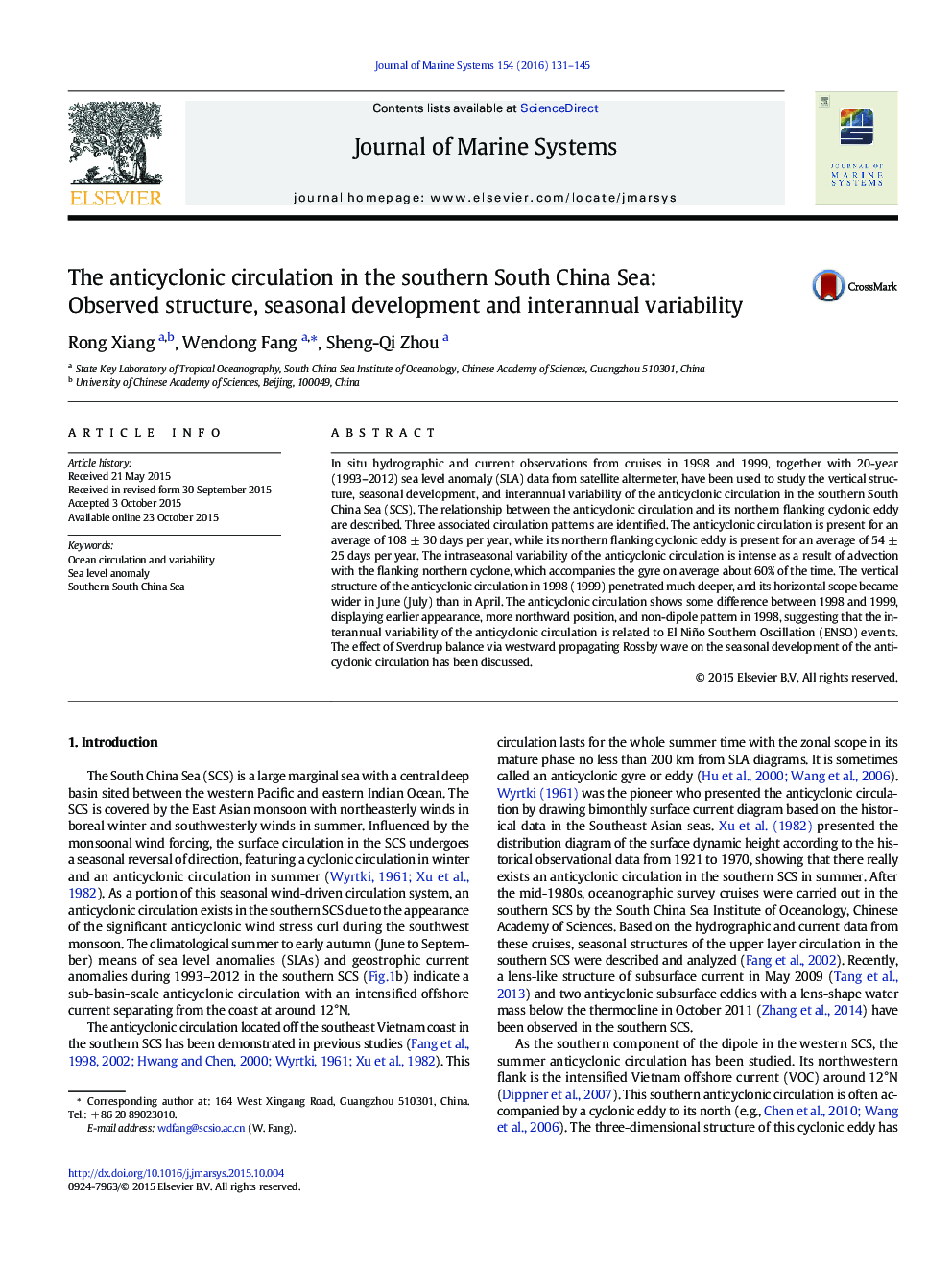| Article ID | Journal | Published Year | Pages | File Type |
|---|---|---|---|---|
| 6386653 | Journal of Marine Systems | 2016 | 15 Pages |
Abstract
In situ hydrographic and current observations from cruises in 1998 and 1999, together with 20-year (1993-2012) sea level anomaly (SLA) data from satellite altermeter, have been used to study the vertical structure, seasonal development, and interannual variability of the anticyclonic circulation in the southern South China Sea (SCS). The relationship between the anticyclonic circulation and its northern flanking cyclonic eddy are described. Three associated circulation patterns are identified. The anticyclonic circulation is present for an average of 108 ± 30 days per year, while its northern flanking cyclonic eddy is present for an average of 54 ± 25 days per year. The intraseasonal variability of the anticyclonic circulation is intense as a result of advection with the flanking northern cyclone, which accompanies the gyre on average about 60% of the time. The vertical structure of the anticyclonic circulation in 1998 (1999) penetrated much deeper, and its horizontal scope became wider in June (July) than in April. The anticyclonic circulation shows some difference between 1998 and 1999, displaying earlier appearance, more northward position, and non-dipole pattern in 1998, suggesting that the interannual variability of the anticyclonic circulation is related to El Niño Southern Oscillation (ENSO) events. The effect of Sverdrup balance via westward propagating Rossby wave on the seasonal development of the anticyclonic circulation has been discussed.
Related Topics
Physical Sciences and Engineering
Earth and Planetary Sciences
Oceanography
Authors
Rong Xiang, Wendong Fang, Sheng-Qi Zhou,
